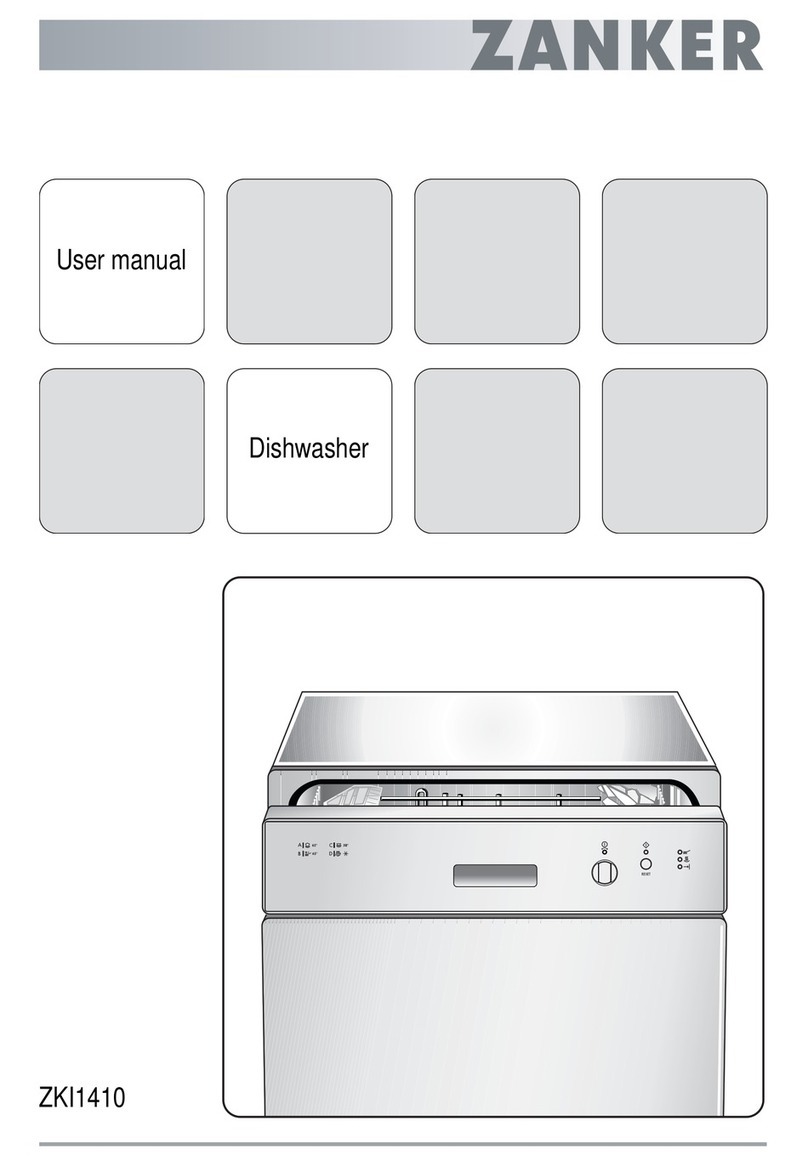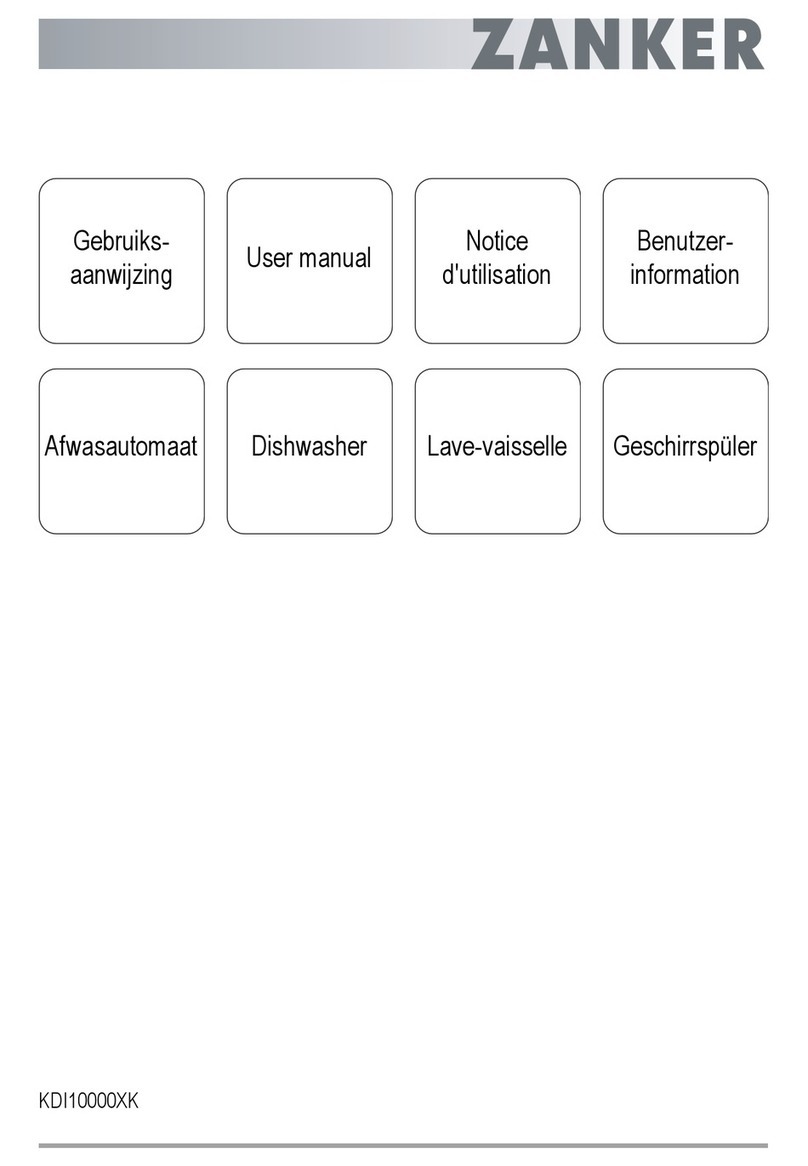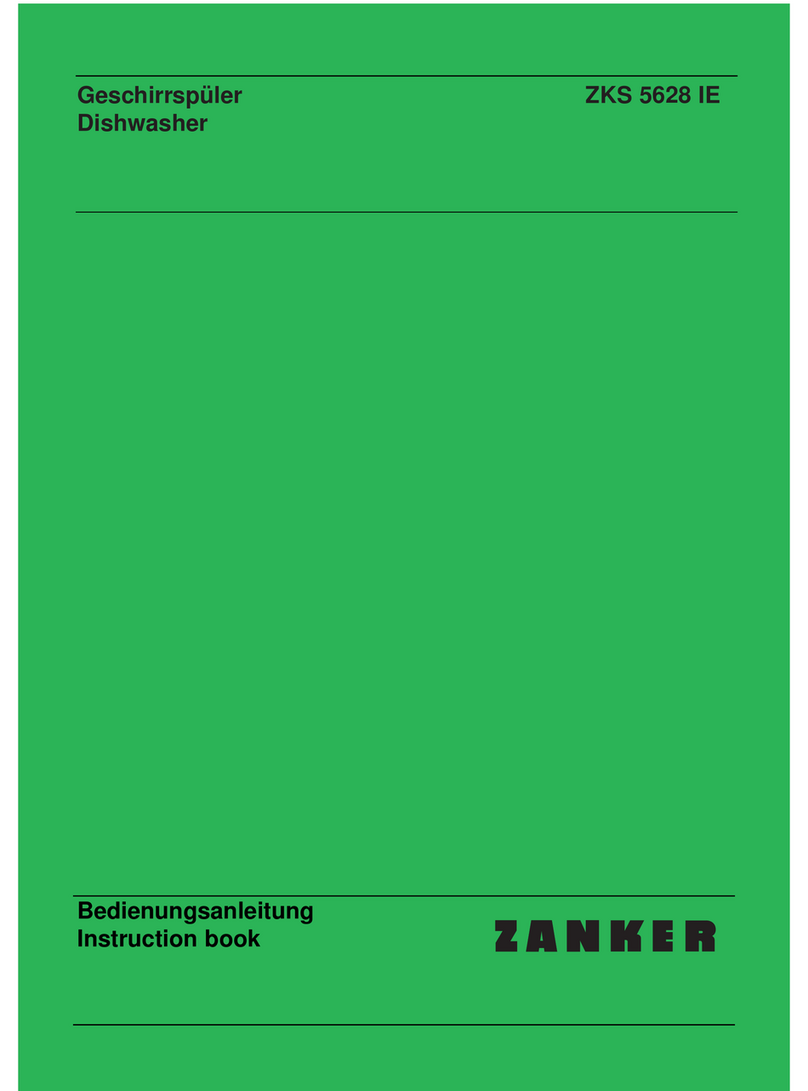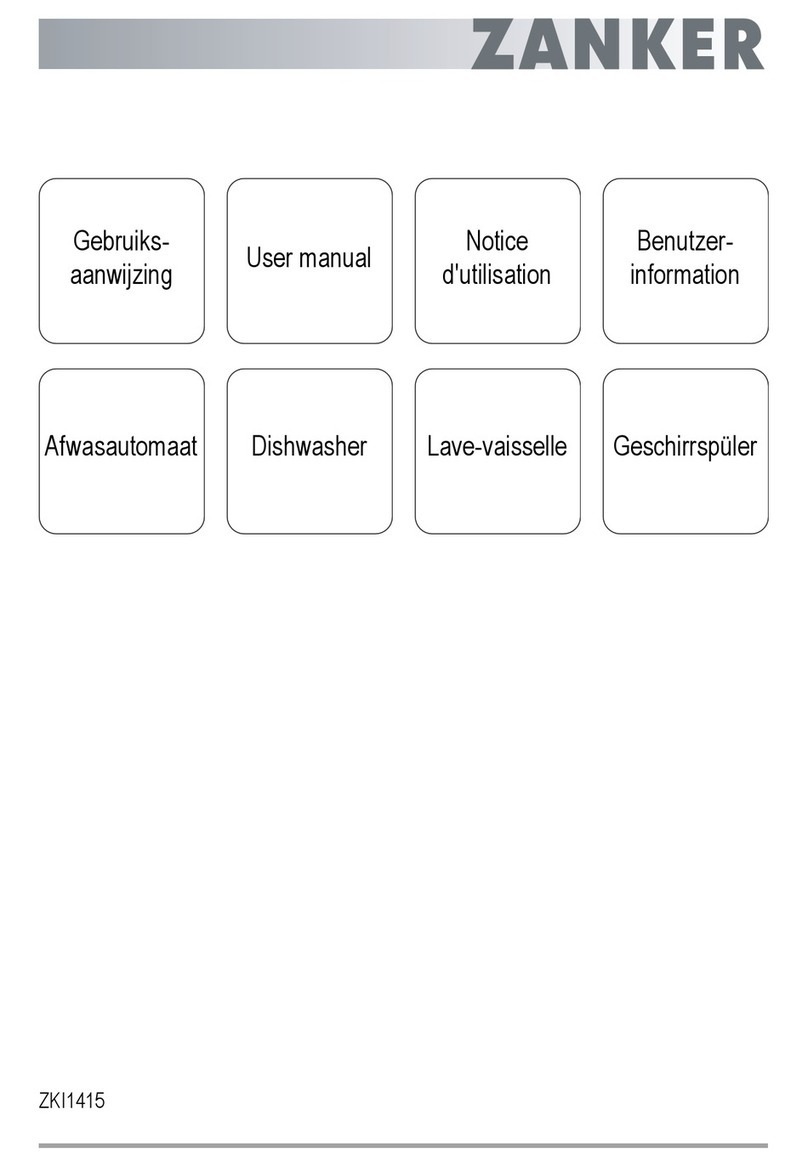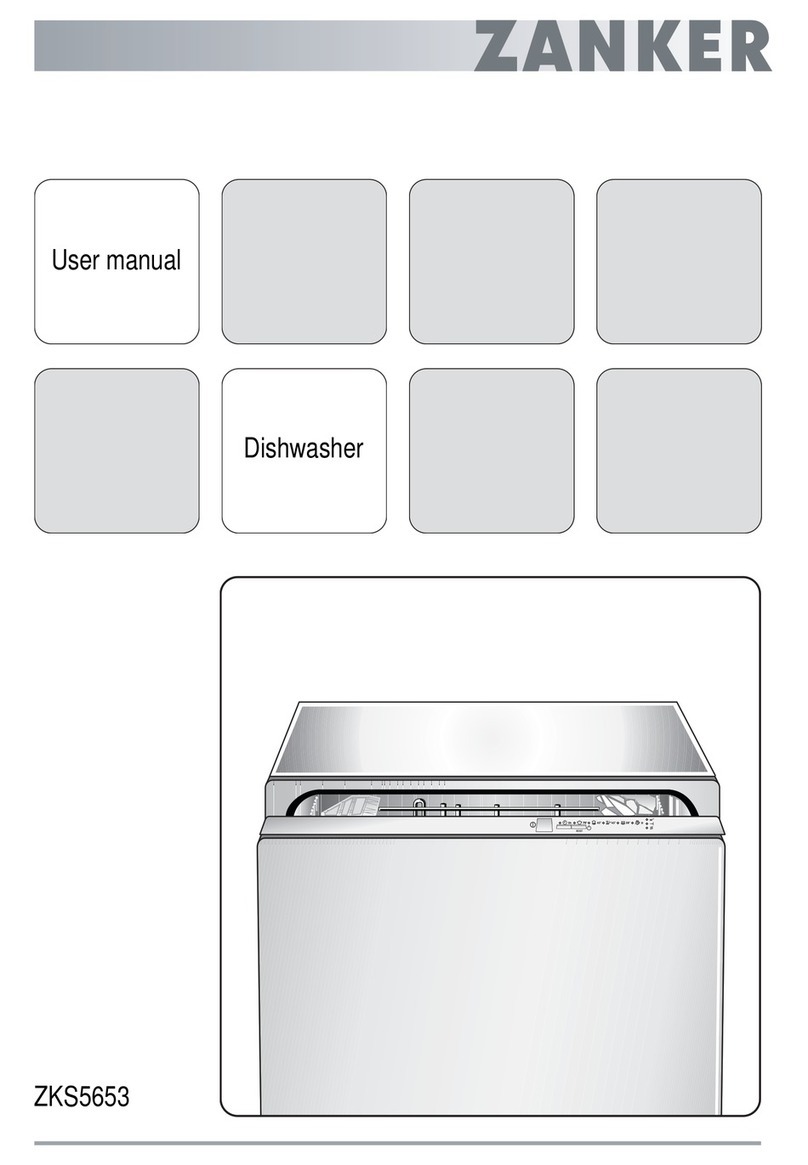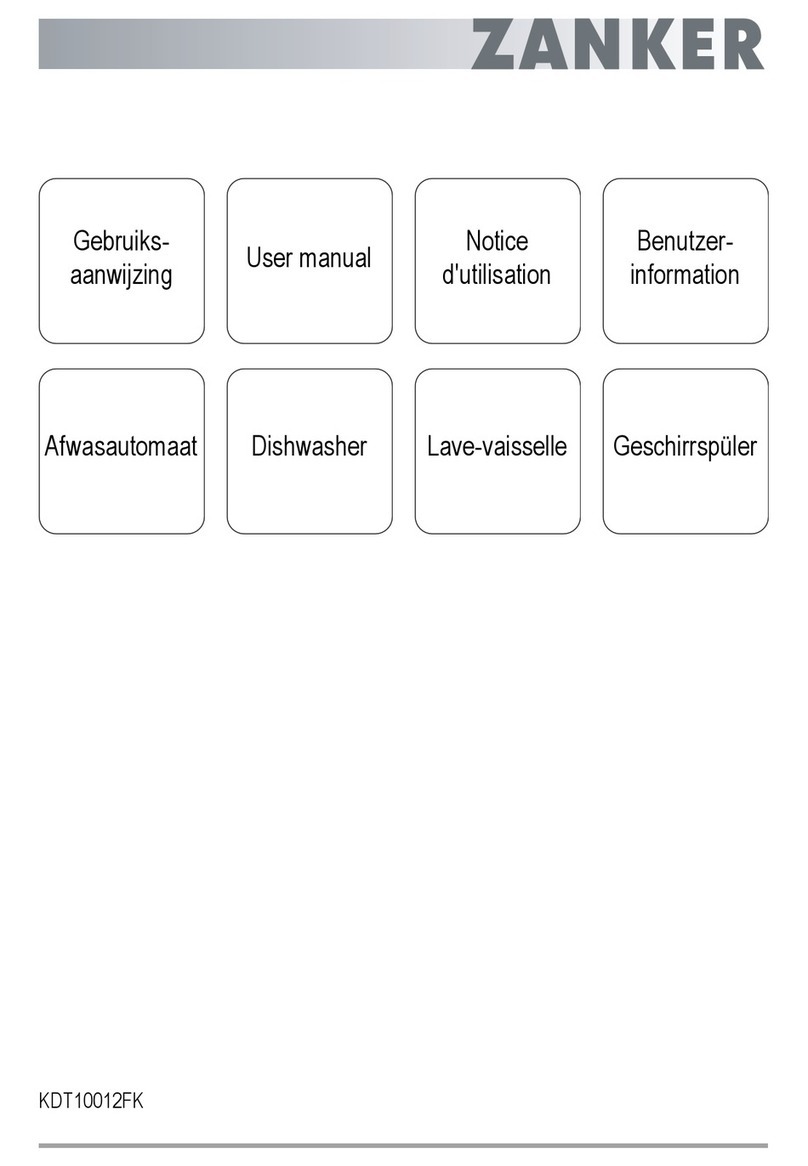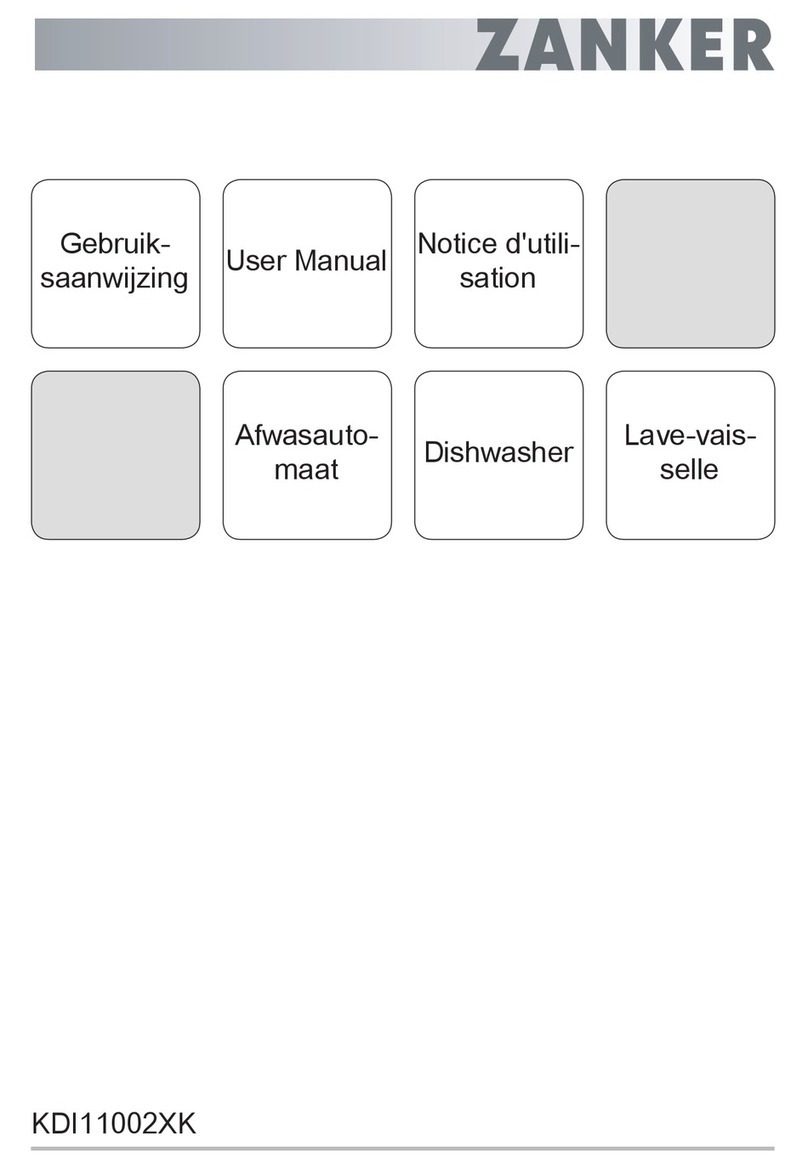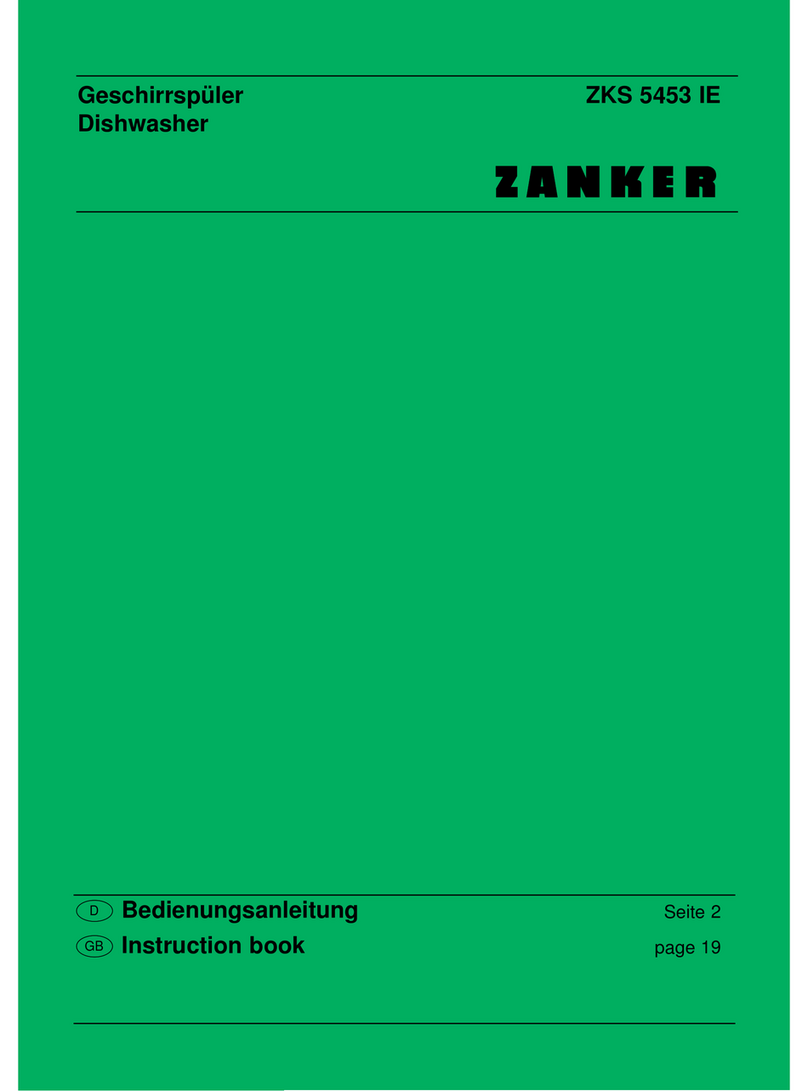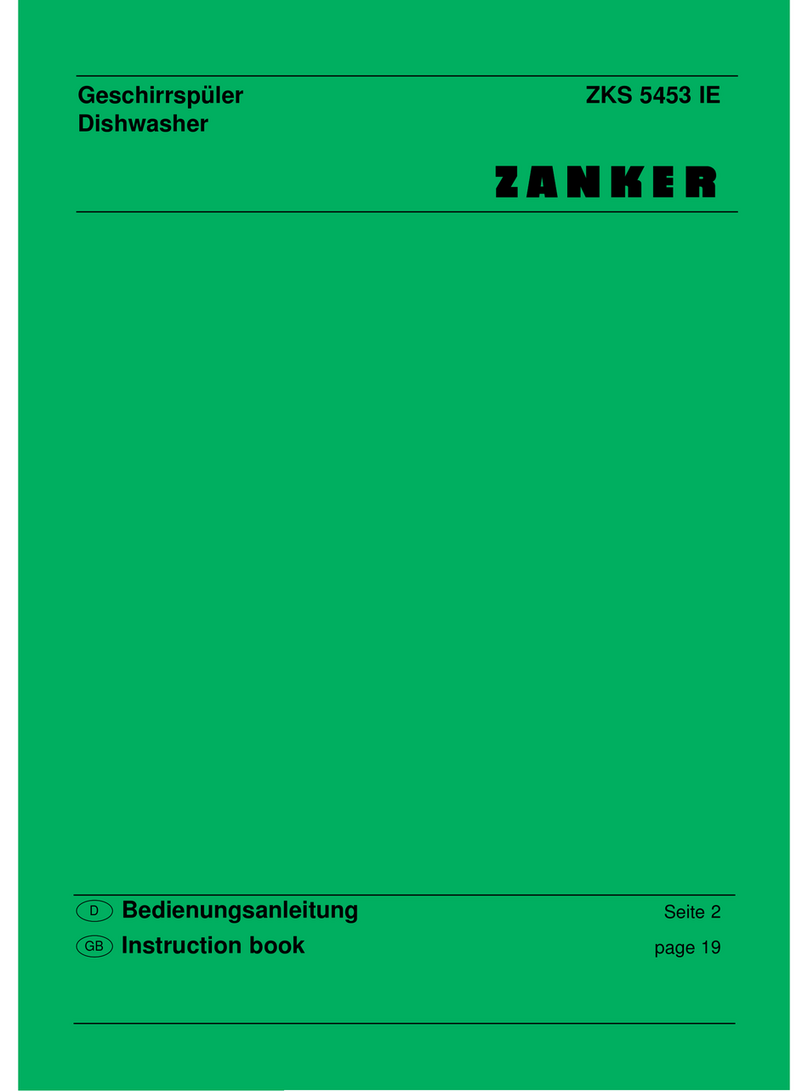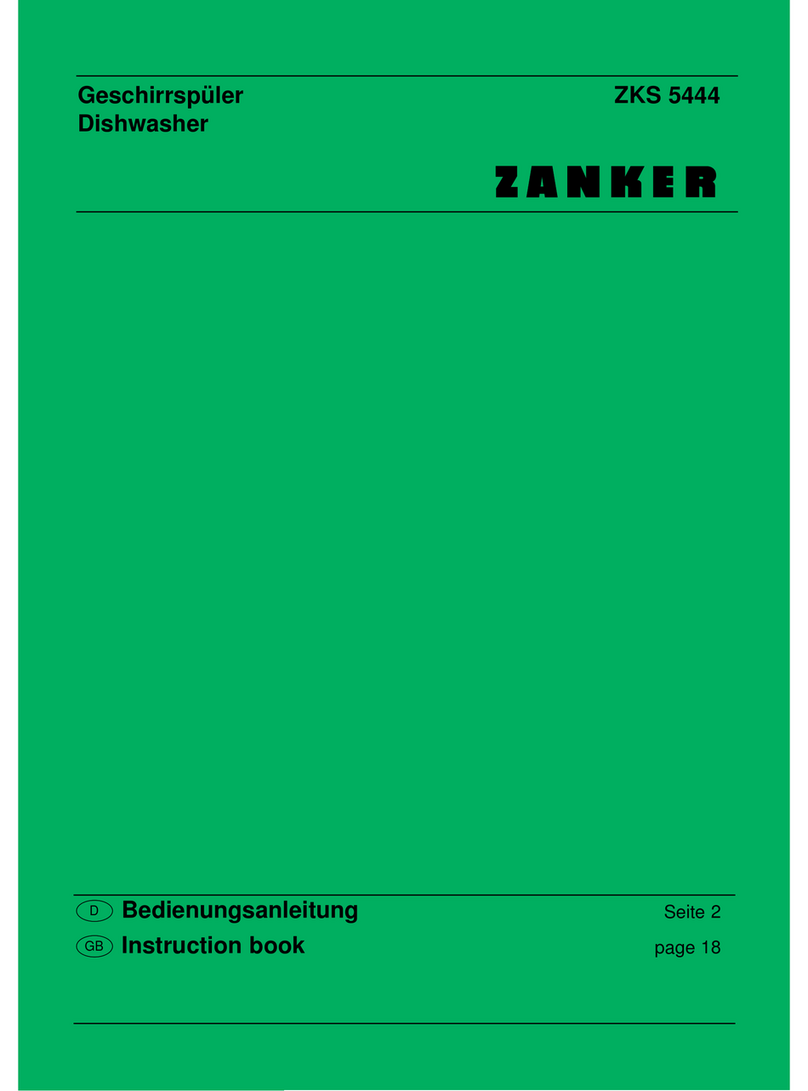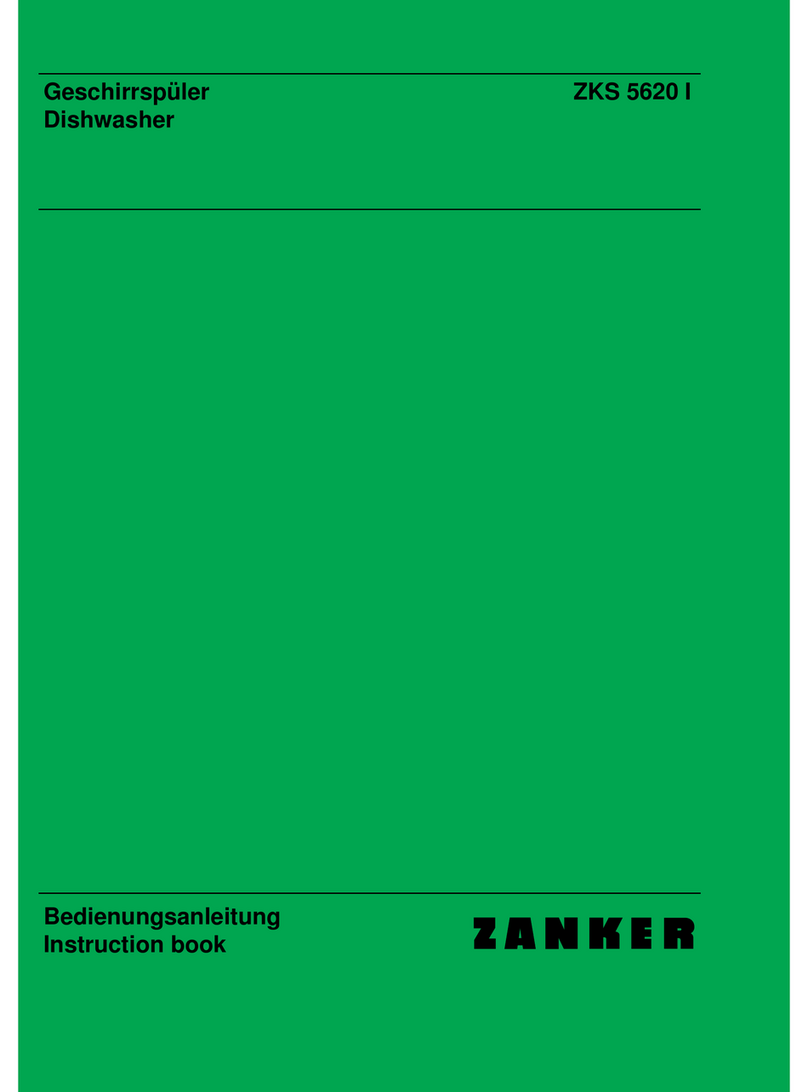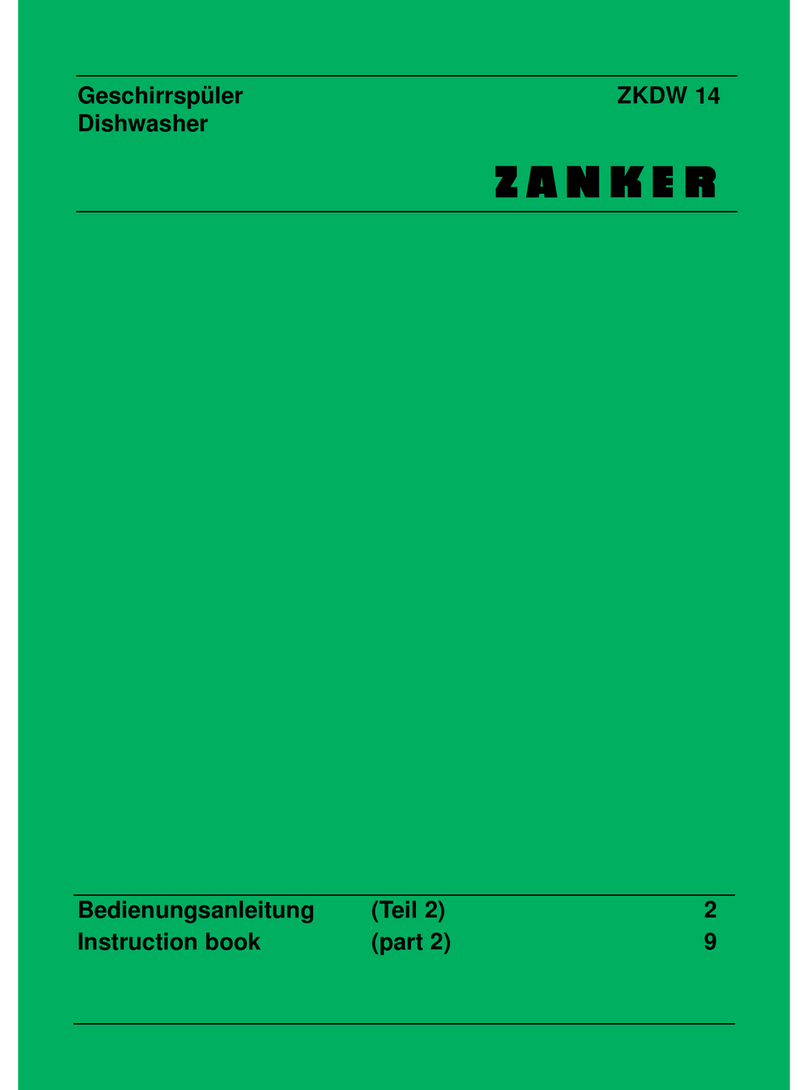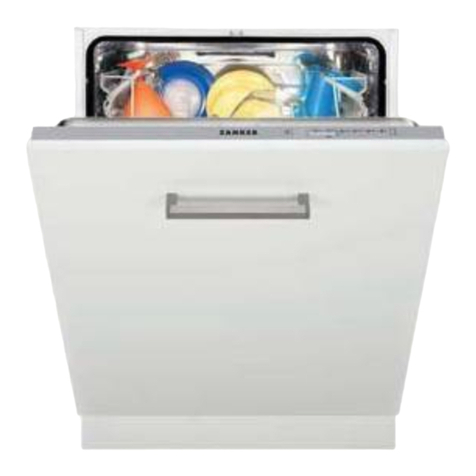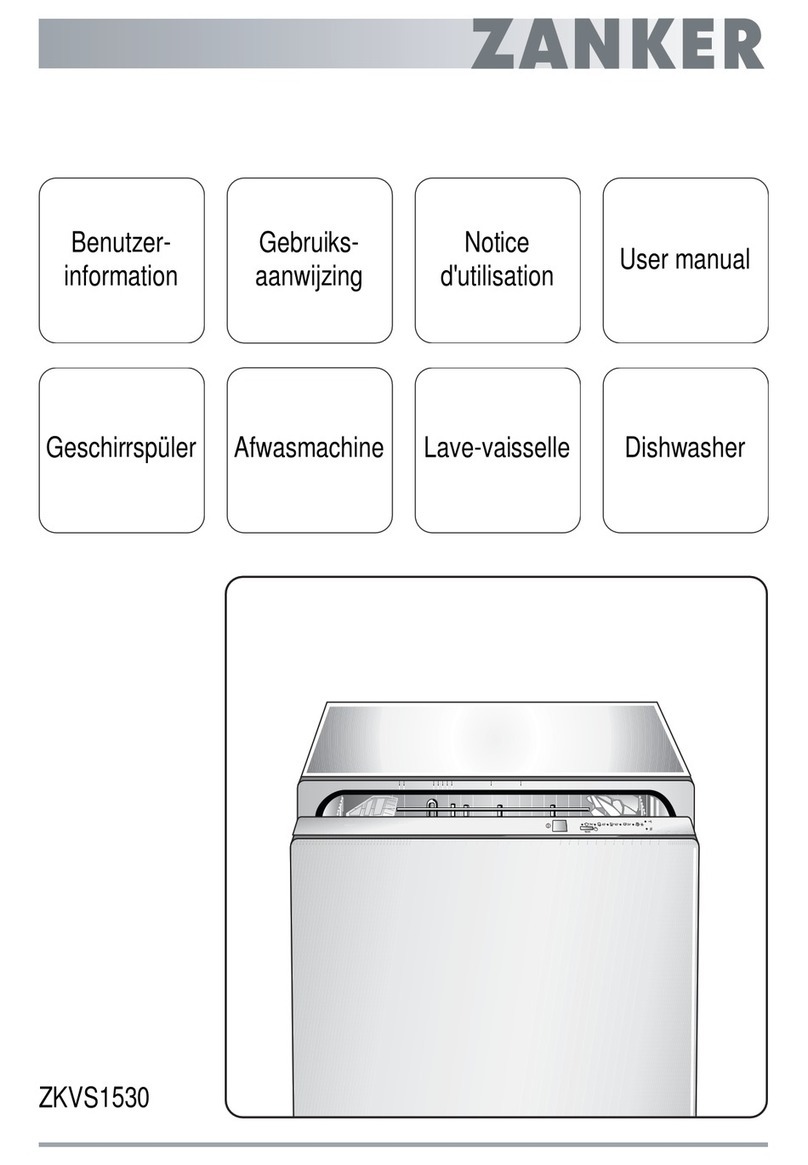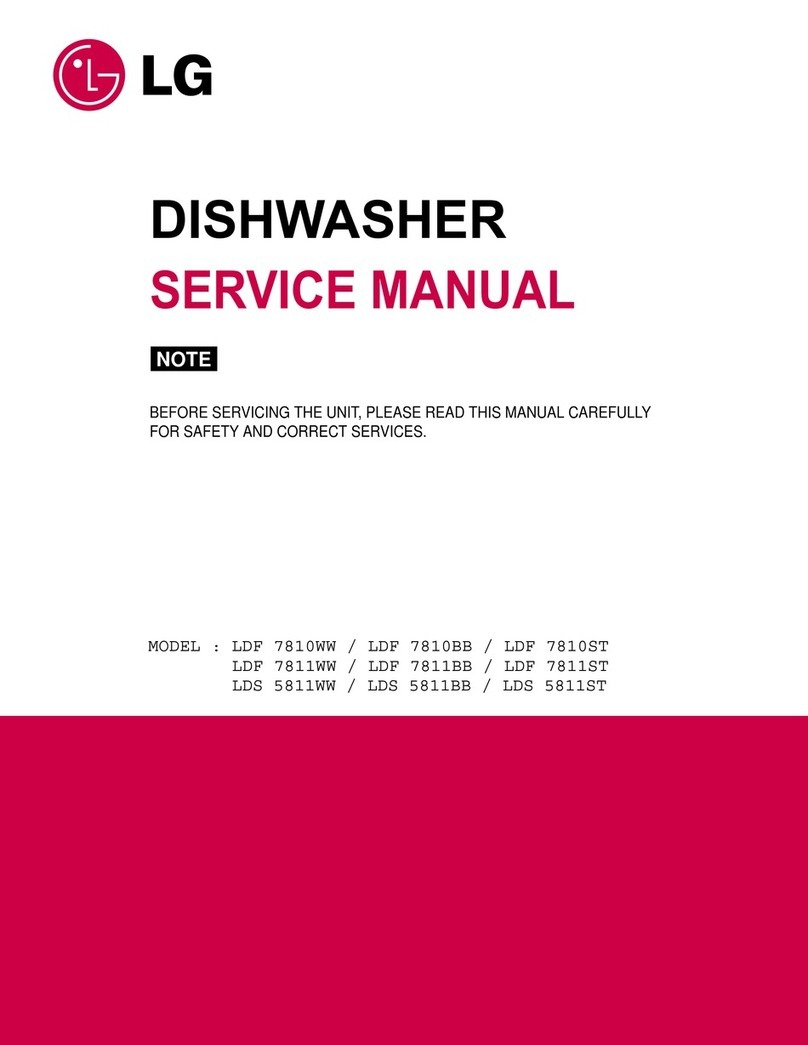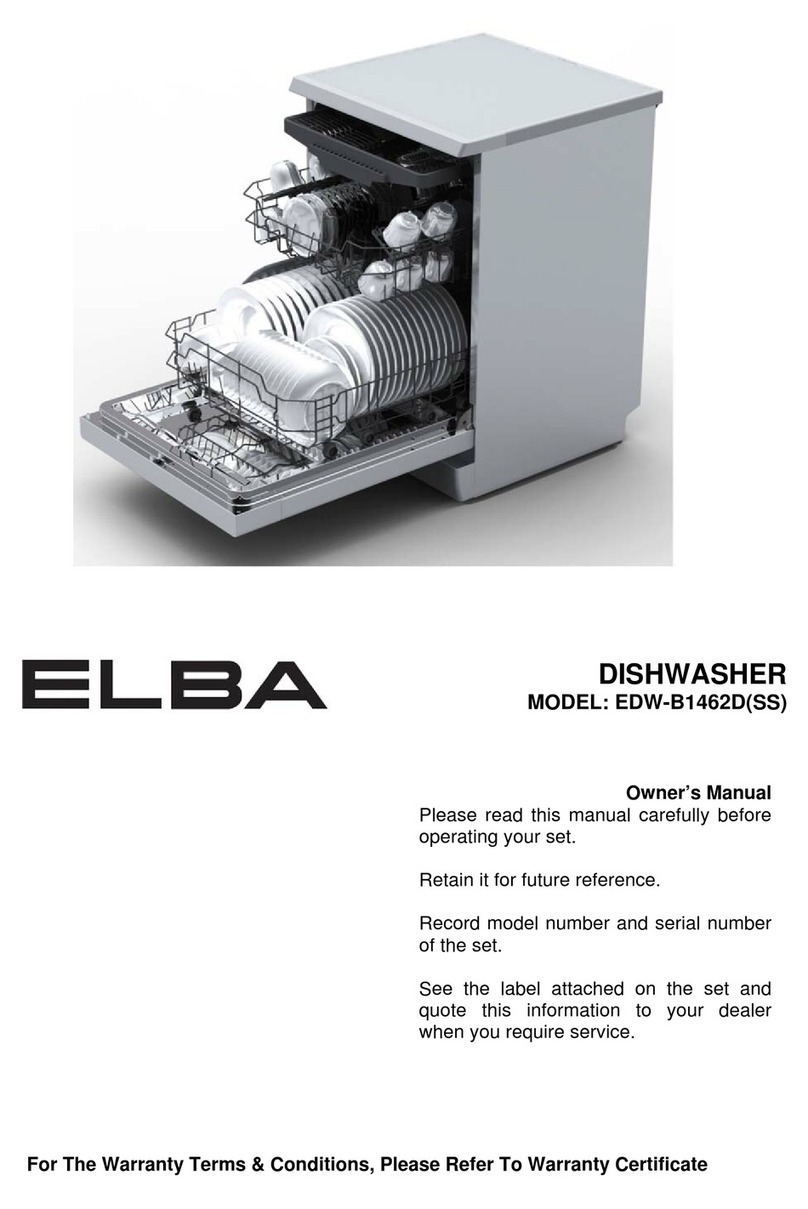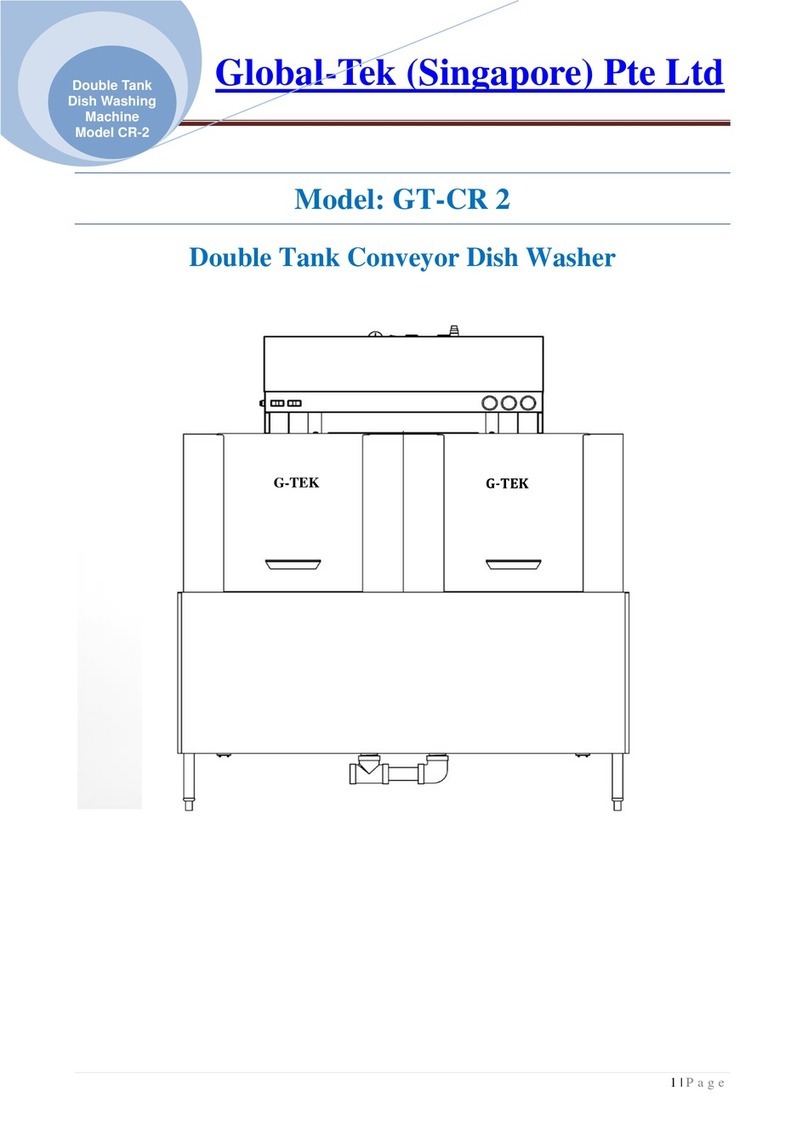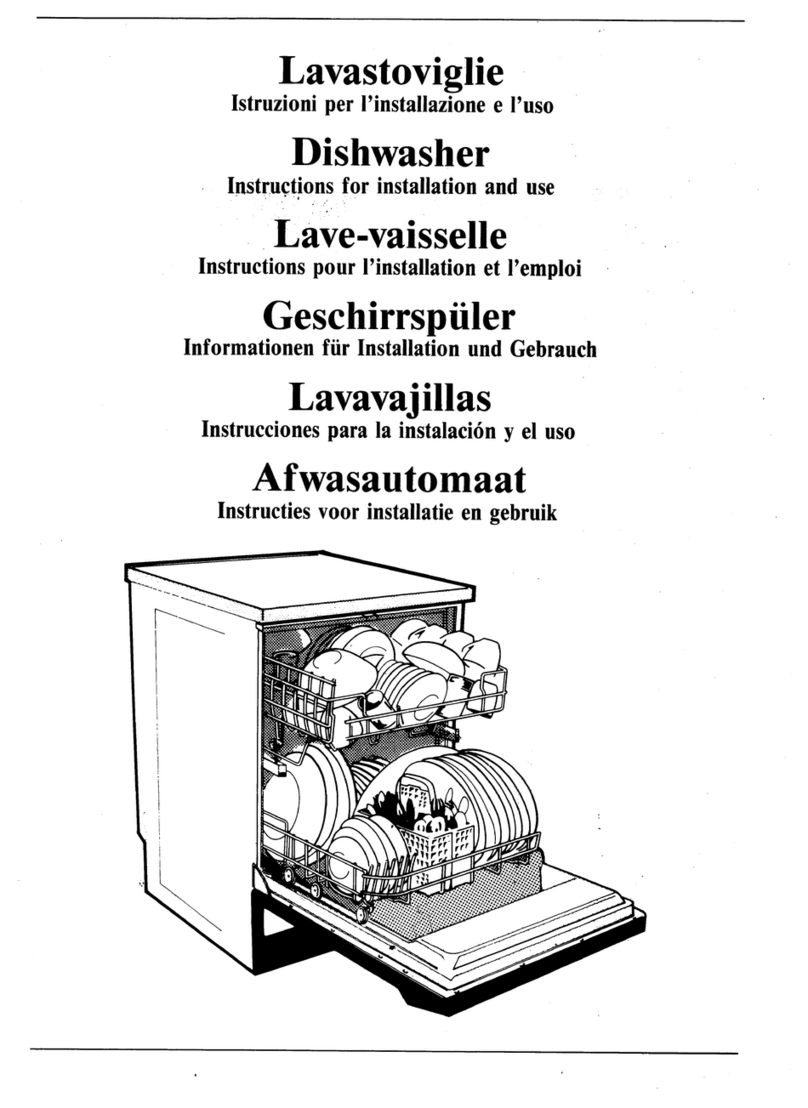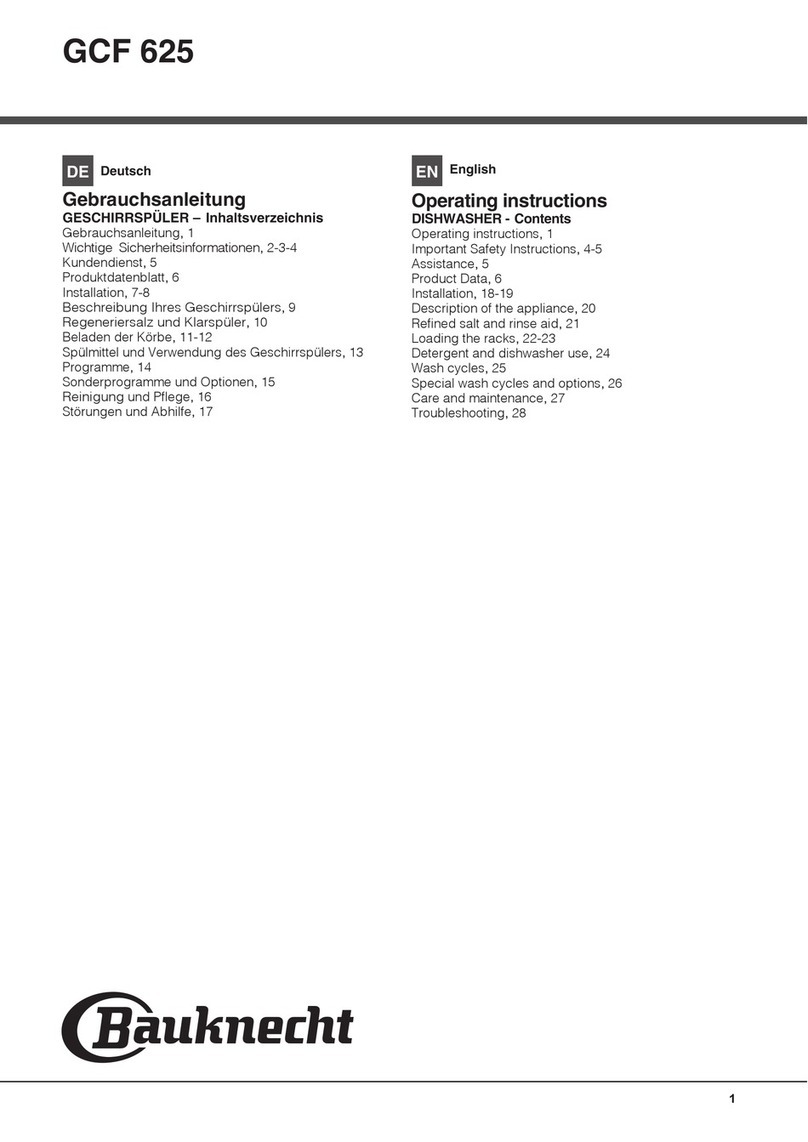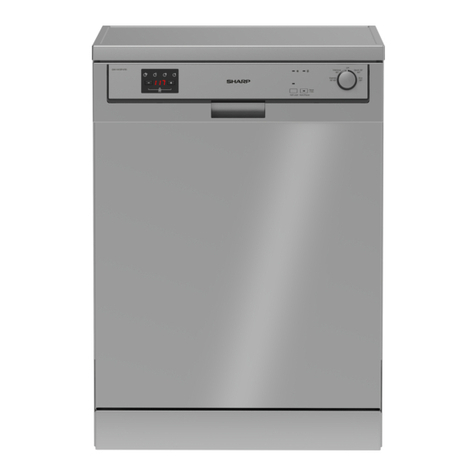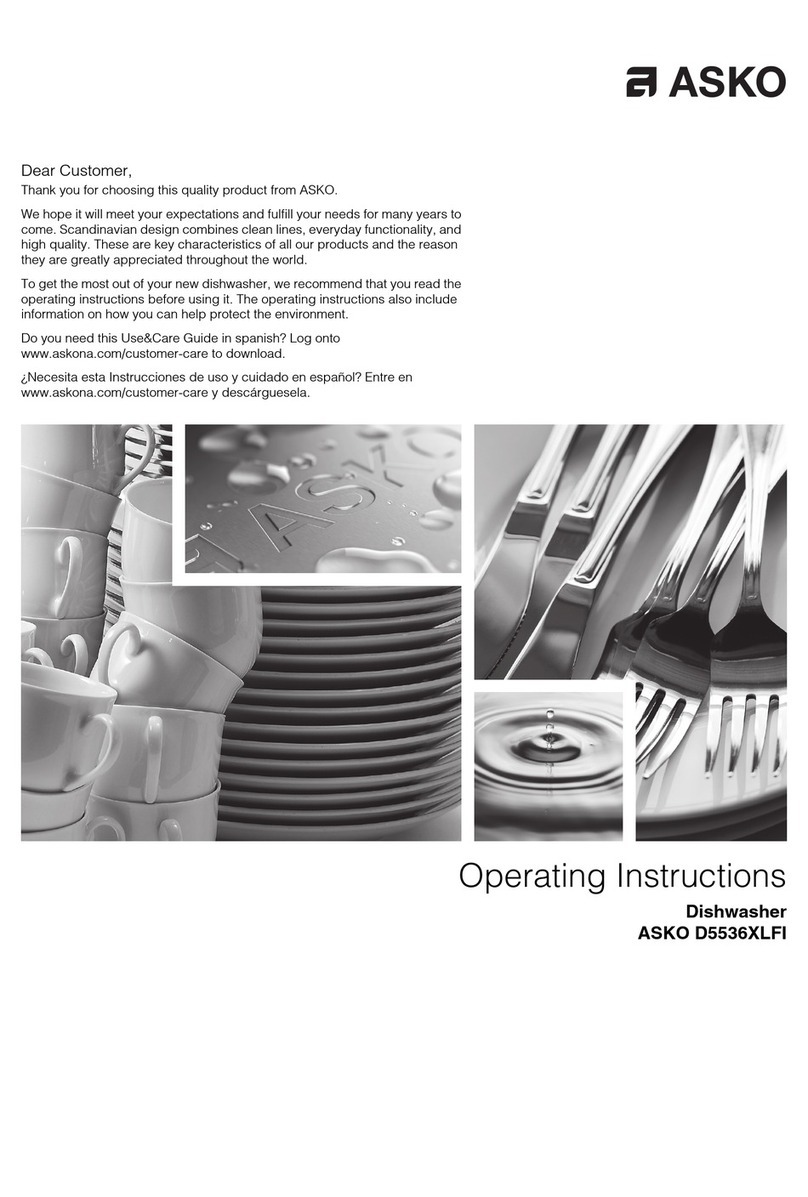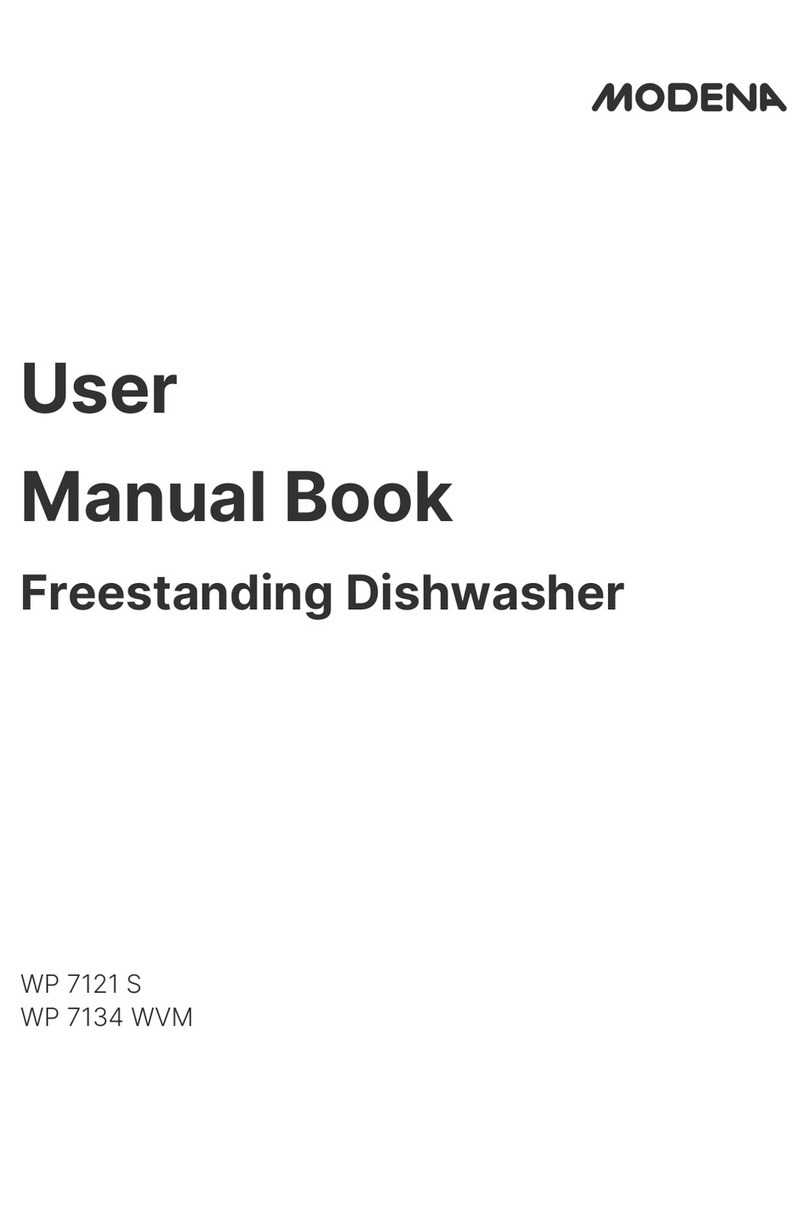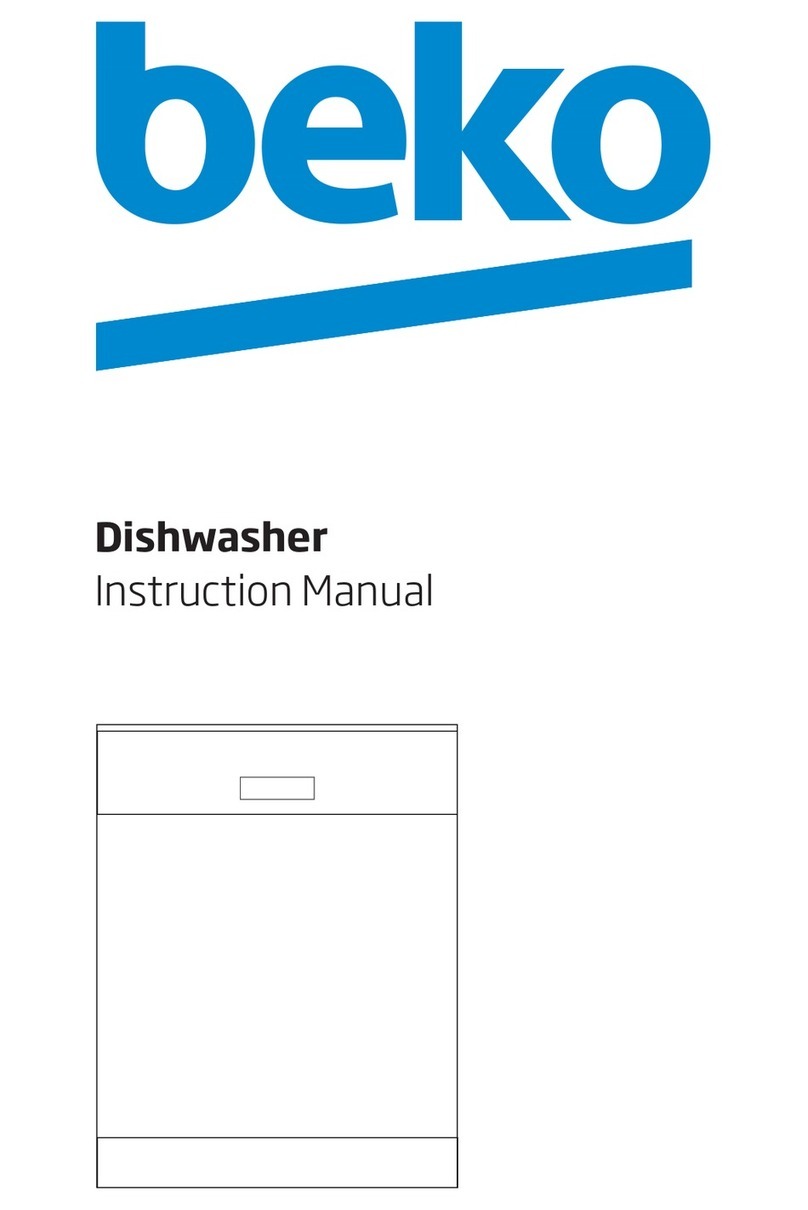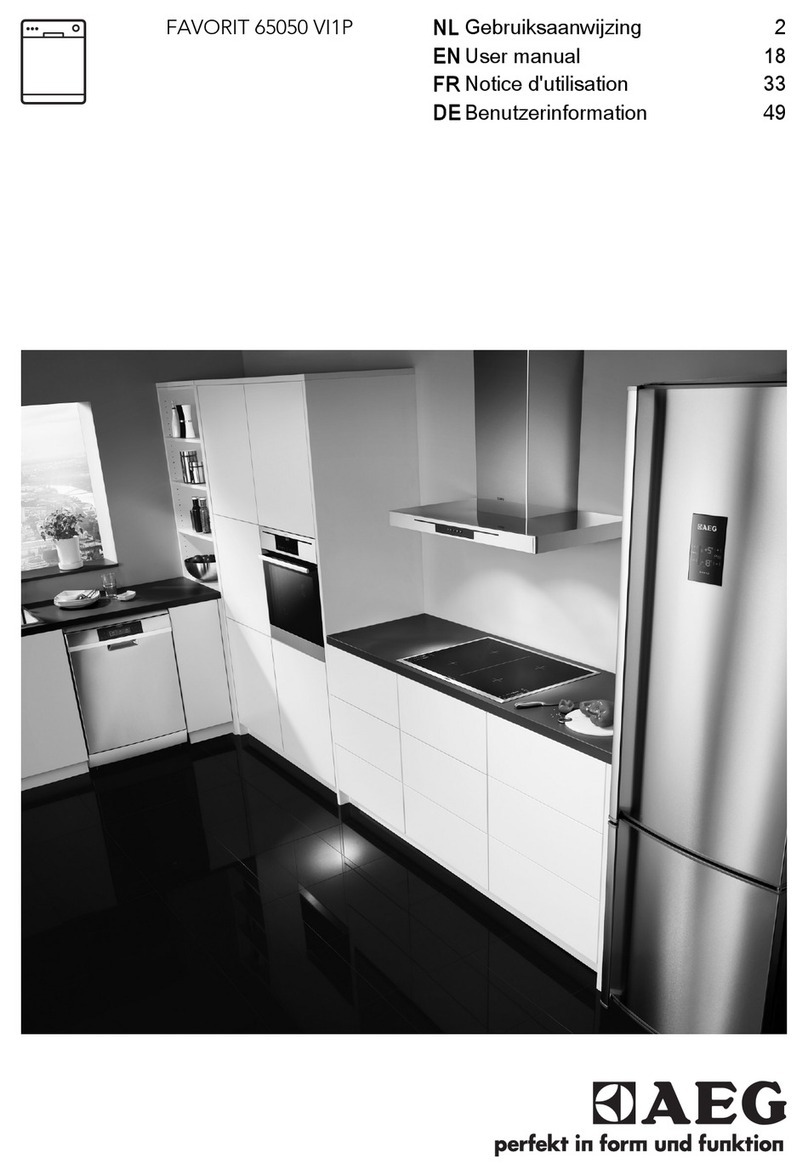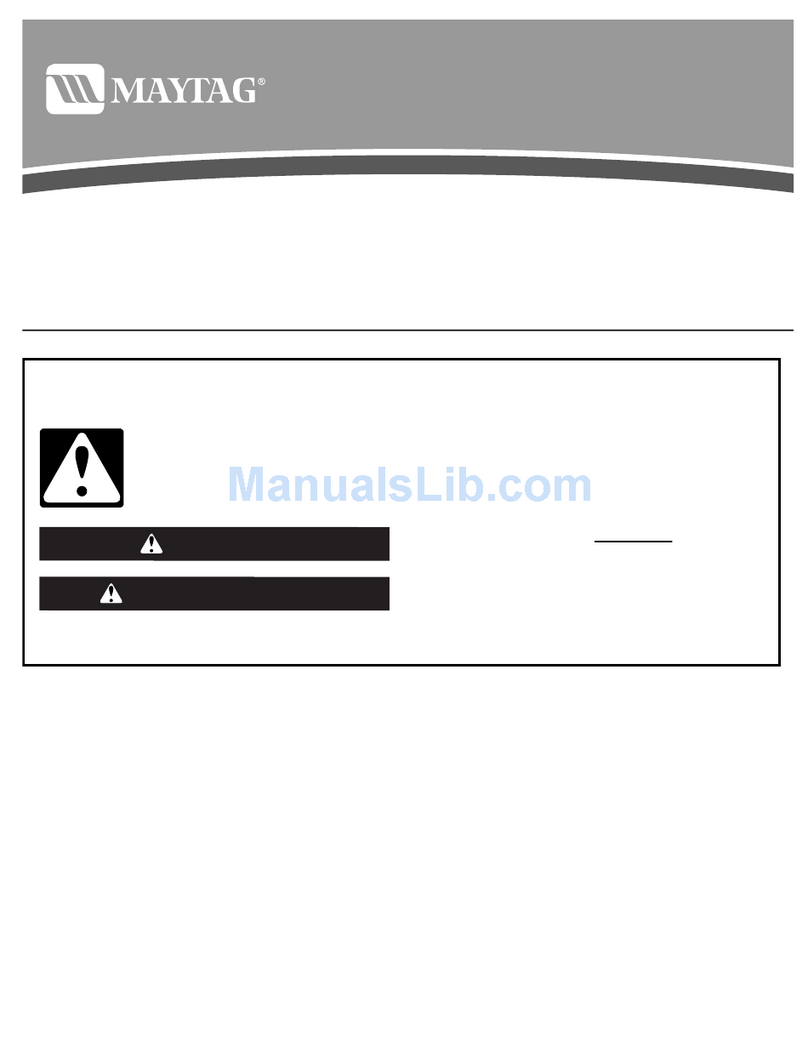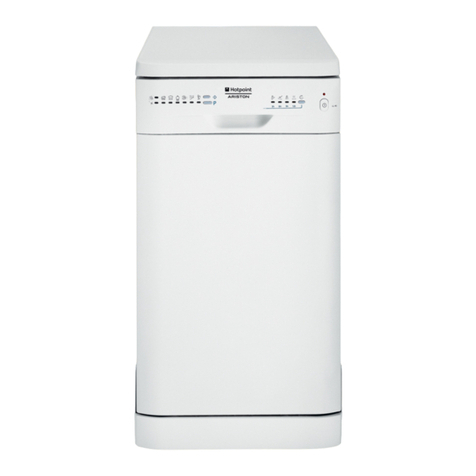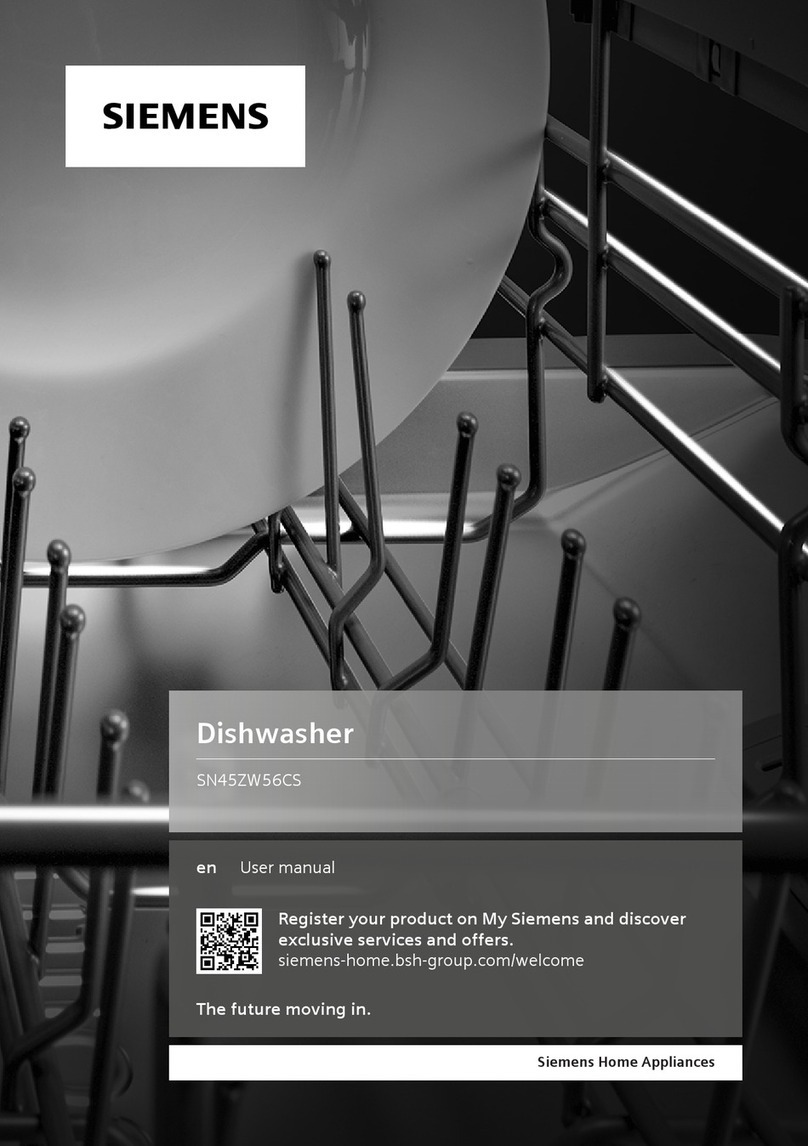It is most important that this instruction book should be retained with the appliance for future reference. Should the
appliance be sold or transferred to another owner, or should you move house and leave the appliance, always ensure that
the book is left with the appliance in order that the new owner can get to know the functioning of the appliance and the
relevant safety information.
This information has been provided in the interest of your safety. You MUST read it carefully before installing or using the
appliance.
Installation
●Check your dishwasher for any transport damage. Never
connect a damaged machine. If your dishwasher is
damaged, you should contact your supplier.
●For safety reasons it is dangerous to alter the specifications
or attempt to modify this product in any way.
●Any electrical and plumbing work required to install this
appliance should be carried out by a qualified and
competent person.
●Care must be taken to ensure that the appliance does not
stand on the electrical supply cable.
●The sides of the dishwasher must never be drilled to
prevent damage to hydraulic components.
Child safety
●This appliance is designed to be operated by adults.
●Children should not be allowed to tamper with the controls
or play with the product.
●Packaging parts may be dangerous for children, who could
even be suffocated! You should therefore keep all
packaging well away from children.
●The water in your dishwasher is not for drinking. Detergent
residues may still be present in your machine. Keep
children well away from your dishwasher when the door is
open.
●Keep all detergents in a safe place out of children's reach.
Your dishwasher in day-to-day use
●Items that are contaminated by petrol, paint, steel or iron
debris, corrosive, acidic or alkaline chemicals must not be
washed in this dishwasher.
●Under no circumstances should you open the door whilst
the appliance is in operation, especially during the washing
phase, hot water may escape. However, if the door is
opened, a safety device ensures that the machine stops.
●Only use products (detergent, salt and rinse aid) specifically
designed for use in dishwashers.
●Long bladed knives stored in an upright position are a
potential hazard.
●Long and/or sharp items of cutlery such as carving knives
must be positioned horizontally in the upper basket.
●Ensure that the door of the dishwasher is always closed
when it is not being loaded or unloaded. In this way you will
avoid anybody tripping over the open door and hurting
themselves.
●When finishing loading or unloading close the door, as an
open door can be a hazard.
●Do not sit or stand on the open door.
●Isolate the appliance from the power supply and turn off the
water supply after use.
●This product should be serviced by an authorised service
engineer, and only genuine spare parts should be used.
●Under no circumstances should you attempt to repair the
machine yourself. Repairs carried out by inexperienced
persons may cause injury or serious malfunctioning.
Contact your local Service Force Centre. Always insist on
genuine spare parts.
Disposal
Dispose of the dishwasher packaging material correctly.
All packaging materials can be recycled.
Plastic parts are marked with standard international
abbreviations:
>PE< for polyethylene, e.g. sheet wrapping material.
>PS< for polystyrene, e.g. padding material (always CFC-
free).
>POM< for polyoxymethylene, e.g. plastic clips.
Cardboard packaging is manufactured from recycled paper
and should be deposited in the waste paper collection for
recycling.
As and when you cease to use your dishwasher and withdraw
it from service, your should render it unserviceable before
having it disposed of.
Warning! Children at play could lock themselves in your
dishwasher or otherwise endanger their lives. Therefore cut off
the power supply cable and make the door closing device
unusable to prevent children from being trapped inside.
For the disposing of the appliance please take it to a recycling
centre or to your dealer who may, for a small contribution to
the costs, dispose it for you.
Economical and
ecological dishwashing
●Ensure that the water softener is correctly adjusted.
●Do not pre-wash under running water.
●Select the wash programme to suit the nature and degree of
the soiling on the dishes.
●Do not use more detergent, dishwasher salt and rinse aid
than is recommended in these operating instructions and by
the manufacturer of the respective product.
Safety instructions
19
